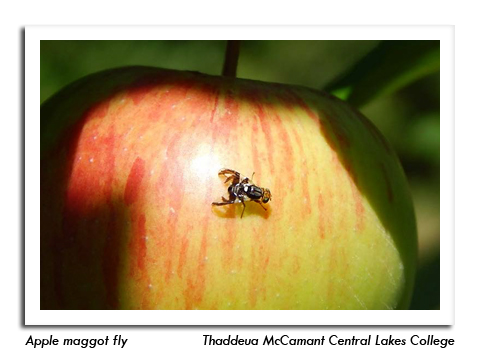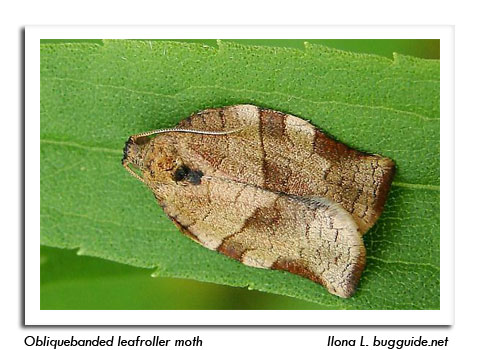
 |
|
|
Fruits
Volume 62 Number 15 Date 08/10/2017 CODLING MOTH - Moth flights generally declined this week, but numbers remain high in some southern orchards. Elevated counts of 10-19 moths were reported from Iowa, Grant and Racine counties. Additional spot treatments may be necessary in orchard blocks where this pest remains abundant (> five moths per trap per week). Above-threshold weekly counts were registered in seven of 24 reporting orchards during the week ending August 9. Control of second-generation CM is important since the larvae can continue to emerge and damage fruits even after the apples are in storage. APPLE MAGGOT - Most monitoring locations captured fewer AM flies than in the previous week. The high count was noted at Plymouth in Sheboygan County where 12 flies were trapped on a baited red sphere. Apple maggot sprays should be maintained through the first week of September in orchards where flies are still being trapped at the rate of one fly per trap per week on unbaited traps or five flies per trap per week on baited traps. OBLIQUEBANDED LEAFROLLER - Oviposition by the summer flight of moths is underway. In contrast to spring caterpillars that primarily feed on vegetative tissue, the late-season larvae infest and damage ripening fruit. Management of the summer generation this month may be advisable to reduce the overwintering population and subsequent spring brood. Orchard IPM Specialist John Aue recommends a 3-5% fruit injury rate as the treatment threshold and suggests a trapping density of two traps per 20 acres to determine where to direct treatments. SPOTTED WING DROSOPHILA - Counts of SWD flies increased at the majority of DATCP's 18 monitoring locations. Seven raspberry sites captured 200 or more flies during the week and counts exceeded 400 flies per trap in two La Crosse County traps. Reports of fruit infestation have come in, especially from fruit plantings not being treated with insecticide. At this point in time, if fruit is ripe, it should be protected with an insecticide program. Growers are reminded to always review preharvest intervals before making an application. SAN JOSE SCALE - Second-generation crawlers are active and continued monitoring is suggested. Damage by this pest can increase exponentially from one generation to the next, and problems may persist through mid-September. As harvest begins, it is recommended that growers examine fruits for the "black cap stage" adults and maintain tape on infested limbs. A count of 10-15 scale crawlers over a few days or 10 crawlers on one tape with zero on all other tapes, may warrant application. -- Krista Hamilton, DATCP Entomologist 





|
|
|